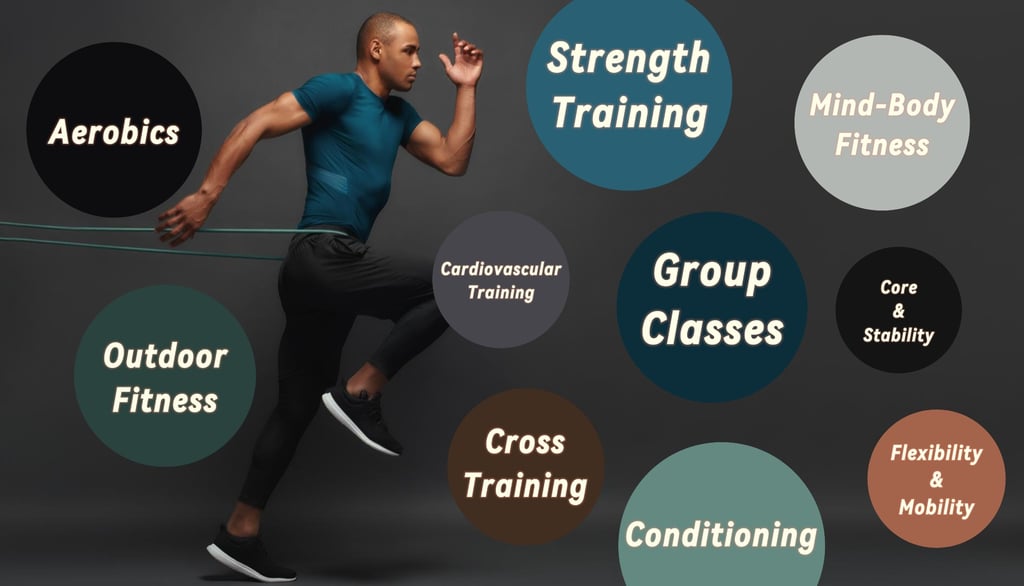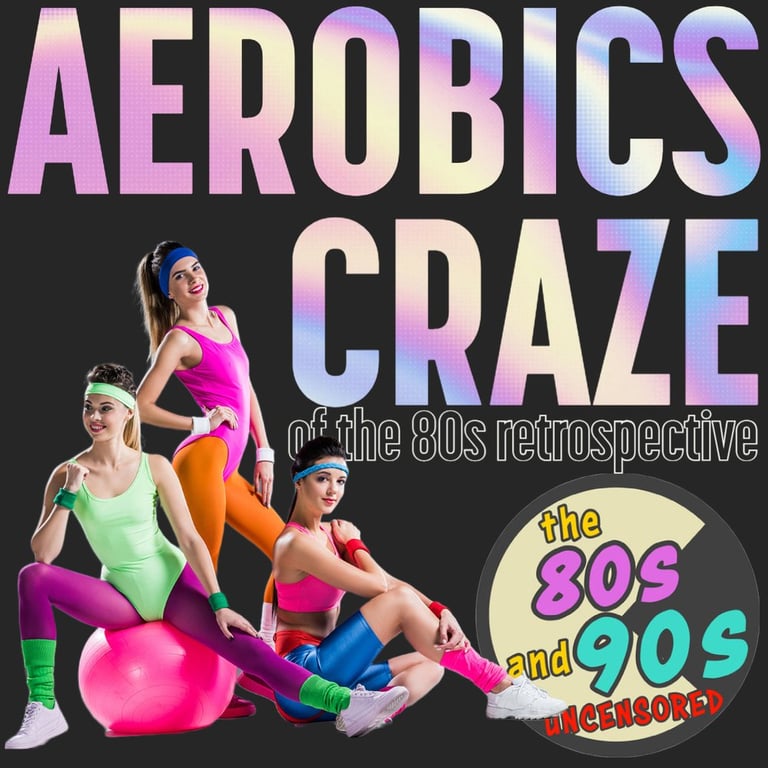Reflection on the evolution of Fitness in France
The approach and understanding of Fitness changed drastically over the past 40 years.


Fitness - as a whole - in France has been growing for several decades. This expansion is still only at the dawn of what it could be in the years to come. To assess this growth and its craze, we must understand its foundation, its benefits and its interpretation.
This article, fueled by studies (Deloitte, EuropeActive, INSEE/INSEP or INSERM) as well as reports and specialized journals (France Télévisions, INA Société or JISSN) aims to provide a brief perspective on the evolution of the practice of fitness, and my perception of what it represents and transmits as values. It is my first attempt on this LinkedIn platform, on a subject that conveys self-reflection and fellowship. If this analysis resonates, seems coherent and relevant to you, then this may be an invitation to explore other more in-depth and quantified readings on this subject.
To read this article in its original version (in french), I invite you to use the comment section below.
As a kid growing up in France in the 90’s, the expression “doing sports” had a somewhat different meaning and connotation than it has today. Mainly morals, linked to social policy and its issues as well as the place of the Body in the mind of society, technology and/or the promotion of physical activities, are at the origin of this differentiation and evolution over the last 40 years. The definition of “doing sports” or describing “sportiness” has been questioned over time, and its challenges have found answers in social trends, communities, professional institutions, and the promotion of health and well-being. It was good practice for youngsters (this was my case) from about the age of 5-6 to do sports regularly. This “sport” was considered as such, when practiced in a structure, association or club. It was very common to integrate an environment or institution that generally provided supervision and monitoring, concepts which, from my point of view, constitute the basis of safe learning, at any age, but which have evolved and modernized today, leading to other debates.
However, in the 1990’s, sporting diversity was limited to the knowledge of the various practices, the access to equipment and infrastructure, and the concepts of the general opinion. Thus, “doing sport” could be seen as a leisure activity, a means of socializing or a notion of competition to excel in a field. Sports facilities were not very developed outside of clubs, while local associations sometimes sought to profit from annual subsidies. Its coaching and mentoring was often provided by volunteers, fans of the said sport, especially in rural areas, sometimes with a cigarette in their mouth, or smelling of alcohol. Hygiene and health in general (physical and moral) were therefore not really a driving force for the practice of sport, rather inclined to a rise in professionalism and financial stakes, or the establishment of programs to prevent juvenile delinquency for instance.
“Sport for all” defended by the French government and communities since the 1960’s has tended to move towards “grassroots sport”. This is what the president of the CNOSF Nelson Paillou was campaigning against, without any real demonstrated success, by explaining towards the end of the 80s: "Grassroots sport is practiced in a club with small championship competitions. Sport for all is sport for all ages, fun sport, sport-game, it is living your body, it is sport-health, it is sport-balance".
Consequently, competition in sports remains a priority (mainly among men and adolescents), often idealized by a personality, a high-level athlete, a pro ! Many kids of my time, like me, dreamed of becoming the next Zidane, Jordan or Richard Virenque, proudly displaying their posters by the dozen in their room.
What about fitness then?


Aerobics Craze of the 80s retrospective - Source image: Studio5
The term Aerobics appeared in the 70s, under American influence, where its popularity exploded in the 80s. In France, however, aerobics or bodybuilding for example are not unanimous. Although presented in the very popular formats of the time such as TV shows or certain specialized newspapers, this diversification of sport has difficulty winning over the public opinion (while it takes different trajectories in the United States, England or Germany), especially among men who do not see the benefits of fitness or the link with the notion of wellness, and quickly build stereotypes, whether they are reserved for women for their well-being and their "weight loss" or for bodybuilders "full of anabolics". We could explicitly hear the opponents vulgarizing the practitioners of such physical activities, evoking pejorative terms like "c’est de la gonflette", or "c’est de l’exhibition". Even if I deliberately exaggerate and take relatively restrictive shortcuts, the reality is not far from it, having experienced it. Between trends, misinformation, economies and lifestyle changes, the growing practice of sport, particularly as a leisure activity, is also accompanied by accidents that are gradually becoming a concern of national scale, particularly due to the increase in public health spending. In 1994, 7 out of 10 French individuals said they were “moving”, a term used at the time to include forms of so-called “informal” or “wild” practices, most of which were not instituted. Furthermore, no one considered these practices to be “sport”. Still in the 1990s, we could glimpse through reports or video footage of certain excesses in high level sports, due to the ever-increasing stakes and media coverage, and the dangerousness of the practices. We could also see that an athlete’s lifestyle (even at top-level) was certainly not highlighted as being essential for his/her performance. Some football players would smoke between matches, other testimonies would mention malnutrition or alcohol levels.
The concept of fitness is nevertheless starting to gain momentum, especially with the support from government aids in the late 90s and early 2000s. The democratization of gyms with the diversification of services offered, the promotion of sports practices in companies keen to strengthen the sense of belonging and community, the introduction of technology, as well as episodes of glorious victories such as the 1998 Football World Cup or at the Olympic Games, all of this has contributed to change morals and motivated individuals to discuss and exchange on different practices. However, one of the main triggers has been the understanding and acceptance of one's body, leading to benefits on the mind, self-confidence and physical preparation. This has modernized the approach to sports, and fitness was finally recognized as a "sport" by the general public.
In the mid-2000s, despite being already known by professionals of the industry and experienced practitioners, considerations such as diet, nutrition, sleep, and regularity have been rationalized and explained to the public, even advertised in commercials. Athletic performances became intrinsically understood as being linked to the body's ability to react to repeated demands of physical activities. However, to achieve such performance and most importantly consistency, you have to set goals, understand your body, accept failure, and repeat your efforts. Rapidly these notions, also conveyed by the values of certain personalities, became societal debates and body awareness (particularly from men and teenagers) transformed the industry. Fitness centers saw their popularity grow and the male/female percentage of members quickly balanced out. The concept of "feeling good in your body" then took on a significant importance for the public opinion, which until then had been sectarian or even discriminative towards women.
The number of members of fitness centers has been constantly increasing since its beginnings, with almost 2 million additional subscribers every decade, for a market of around 6 million members today, overtaken in Europe by Germany and the UK. The offer and service are motivated by a market with high growth potential (sometimes greater than +10% per year), and the attractiveness is found in the diversification of activities, individual coaching, body care and other group classes. “Outdoor activities”, which grew in popularity in France, could now be practiced (or at least get closer to being replicated) in fitness centers, close to homes in urban areas. No need to take the car to get out of these areas and “do your sport”. This phenomenon is emancipating itself at an impressive speed since it fits perfectly into a “metropolitan rhythm” for which we could include “gym” to the famous Parisian quote: “metro, boulot, GYM, dodo”.


"Feeling good in your body" demands dedication - Source image: hintergrundbild
Fitness then takes on multiple facets and becomes, like other disciplines, a leisure activity and/or a competition. Modern values also appear (influenced by the US again) of Personal Care, Healthy Lifestyle, Public health and Prevention Medicine. The economy of well-being is then at the center of attention. “I go to the gym” becomes almost a status to fit into the societal mold, although it mainly affects a population of 20-40 years of age. We have to wait a few more years to see younger and senior populations follow suit. Fitness centers are not the only vectors of this dynamic as the introduction of technology highlights the range of possibilities and expands the practice of fitness in parks, public places, at home, with friends, at work. The recent period of Covid-19 has pushed the limits even further thanks to virtualization, which has become a norm for professionals, athletes, amateurs and enthusiasts. Analysis and personal monitoring or via a virtual coach wins the hearts of millions of people. Talking about heart, we measure vital or non-vital parameters in a continual perspective of self-discovery and learning about our body, from anticipation to re-education.
Pleasure or fun, social pressure, stress at work, the search for an ideal, motivations are diverse and trends change quickly, expectations are high and disappointments sometimes immense abysses. For some, fitness becomes addictive and sometimes takes on unhealthy proportions of body worship, while for others, goals seem unreachable and expectations have not been met. And media spins and influence accentuate for many the symbolization of success by the visuals or the results, of a status, of an ideal, which cannot be achieved without discipline, efforts, control and monitoring.
